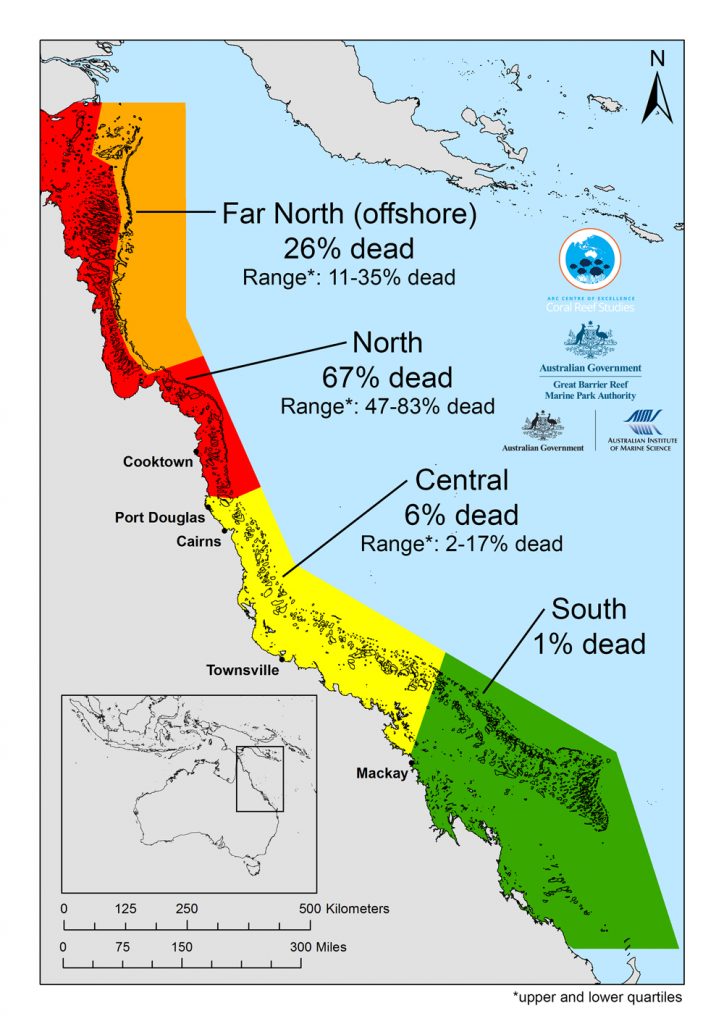Coral reefs have been in trouble for a while now but some years are definitely worse than others. Unfortunately, the ARC Centre of Excellence for Coral Reef Studies is confirming 2016 to be the worst year yet for the Great Barrier Reef in what they say is the largest mass bleaching event on record.
The Australian research center estimates 67 percent of shallow-water corals in the northern part of the Great Barrier Reef died in the past 8-9 months. Farther south, water temperatures remained cooler and the reef made out with a mere 1 percent death toll.
“Most of the losses in 2016 have occurred in the northern, most-pristine part of the Great Barrier Reef. This region escaped with minor damage in two earlier bleaching events in 1998 and 2002, but this time around it has been badly affected,” Professor Terry Hughes, Director of the Australian Research Council (ARC) Centre of Excellence for Coral Reef Studies, said in a statement.

Once nearly unheard of, mass bleaching events in coral reefs are now turning into a recurring event. It gets particularly bad in El Niño years when ocean temperatures spike. Just in May of this year, the research center pointed to global warming for causing three mass bleaching events in the last 18 years in the Great Barrier Reef.
Corals get their lush, picture-worthy colors from algae (zooxanthellae) that live in their tissue. They have a symbiotic relationship with the algae which provides them with their food source. But when waters get too warm, they’ll expel the algae and turn white. This doesn’t kill them yet but it does make them vulnerable to death.
Researchers predict it could take 10-15 years before bleached coral can return to normal. But a new bleaching event before then could hamper recovery and cause permanent damage the reef will never bounce back from.
And some research suggests that if we don’t do anything, coral reefs worldwide could be in danger of disappearing by 2050. The unsurprising culprits behind the die-offs include overfishing, warming temperatures, ocean acidification, and fertilizer and pesticide runoff.
Still, up to now, nations haven’t been doing much to stem the pace of disaster. Even the Paris Agreement – which beholdens nations to limiting global warming to below 2 degrees Celsius – likely won’t be enough to save the reefs. For that reason, the policy conversation will need to shift soon so that we’re not just asking what we need to do to save our coral reefs. Rather, we need to take a sober look at how societies and economies can adapt when they’re gone.











